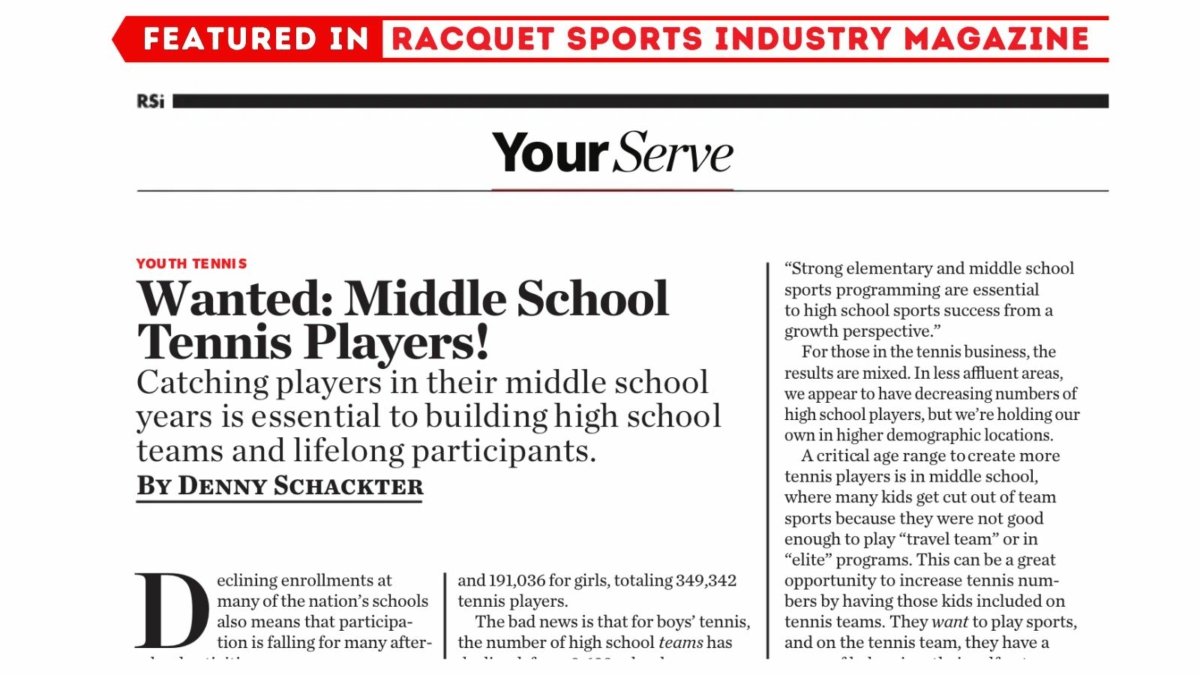Declining enrollments at many of the nation’s schools also means that participation is falling for many after-school activities. For high school athletics, one of the charges of the National Federation of State High School Associations (NFHS) is to track which sports are growing and which are declining. The good news is that for the 2022-2023 school year, the number of high school boys and girls playing tennis actually grew from the previous year. According to NFHS data, the 2021-2022 school year saw 145,858 boys and 176,185 girls playing high school tennis, for a total of 322,043 student athletes. Last year, those numbers grew to 158,306 for high school boys and 191,036 for girls, totaling 349,342 tennis players.
The bad news is that for boys’ tennis, the number of high school teams has declined, from 9,632 school programs in 2021-2022 to 7,673 last year. Girls’ teams grew slightly during that time, from 9,987 programs to 10,564, but this is still a cautionary tale. And it starts before students reach high school. Lindsey Atkinson, the director of sports at the NFHS, also is the chair of the USTA’s High School Committee, and she is a strong believer in early school athletic opportunities.“Elementary school exposure to a sport and middle school structure have created the American interscholastic high school sports model,” she says.
“Strong elementary and middle school sports programming are essential to high school sports success from a growth perspective.”
For those in the tennis business, the results are mixed. In less affluent areas, we appear to have decreasing numbers of high school players, but we’re holding our own in higher demographic locations. A critical age range to create more tennis players is in middle school, where many kids get cut out of team sports because they were not good enough to play “travel team” or in“elite” programs. This can be a great opportunity to increase tennis numbers by having those kids included on tennis teams. They want to play sports, and on the tennis team, they have a sense of belonging, their self-esteem goes up, they get to play, and they are engaged in a healthy and fun sport.
What can we do to increase our tennis numbers? I believe USTA local districts, park and rec programs, par-ents and “pied-pipers” can team up and create programming to increase middle school tennis.
In other sports, beginning instruction often is given by volunteers—often parents. Getting more parents involved can help retain kids in school tennis. We also need to find a way to safely, and without invading privacy, “share”registration and program information in a way that can help grow middle school and high school tennis. For in-stance, while park districts can’t simply “give” registration data to the USTA or other organizations, they can invite USTA personnel, high school coaches, Community Tennis Associations, etc. to park district tennis facilities to give out programming information. Private facilities can do the same. We need a team approach to this.
We all need to continue to focus on growth and retention at all levels, and making tennis for middle school students attractive will help to ensure that we have players for high school, college and beyond.
Download the magazine here.

